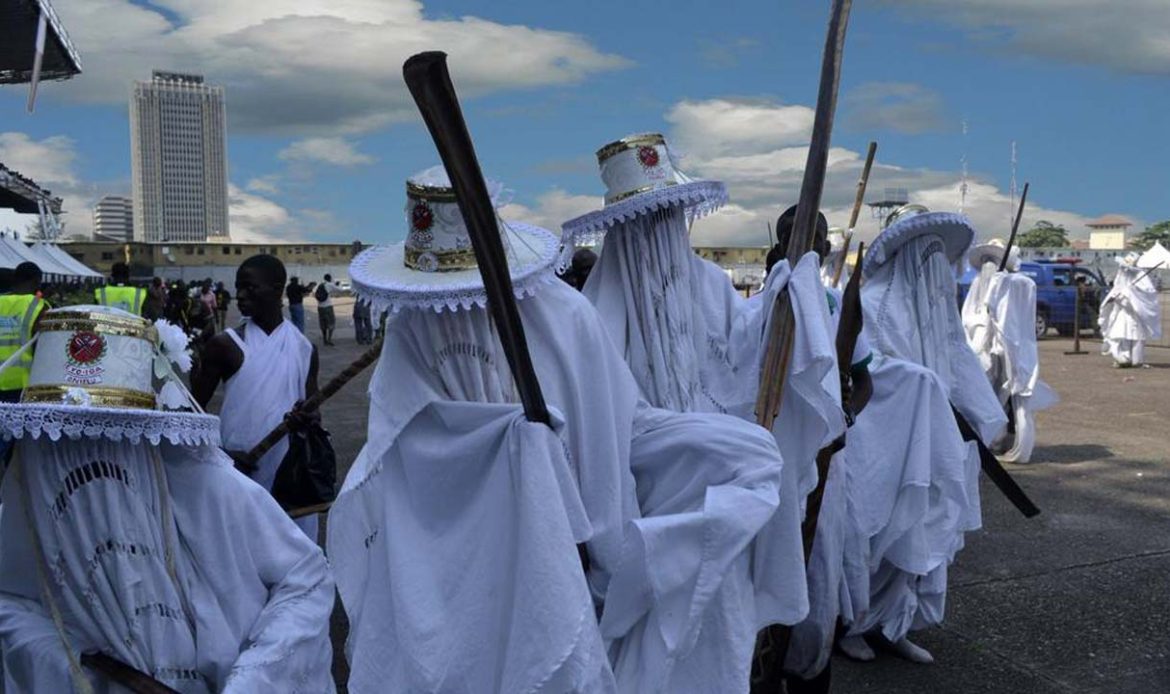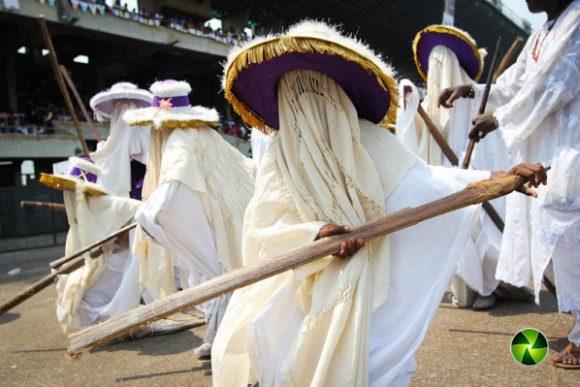Eyo Festival
Eyo Festival is one of the most prominent and elaborate festivals celebrated in Nigeria. The Eyo Festival, also known as the” Adamu Orisha Play” is usually celebrated by the people of “Isale Eko” on Lagos Island. The Eyo festival celebration has gone beyond Lagos Island and Lagos state. It has become a
tourist event, attracting people from all walks of life.

The Eyo festival is especially unique with sights of thousands of men and young boys, all donned in white outfits and wide-brimmed hats, wielding their staff of authority, sometimes in jovial menacing manners, but at most times moving along gaily in a carnival-like atmosphere. The great thing about the Eyo
Festival is that it brings diverse people together. It is about the beauty of a culture and a tradition that has been preserved for over three hundred years by the Lagos Island indigenes.
Read Also: Lalle
The Festival originated from the observations held by the secret societies of Lagos. Originally the Eyo festival is held to accompany the soul of a departed King or Chief in Lagos. However, in modern times, it is observed to usher in a new king or on-demand by a state governor or an influential indigene for a special occasion. The Eyo festival consists of five various branches which include the Adimu, Okanlaba Ekun, Olopa Eyo, Eyo Orisa Ologede, and Eyo Orisa Angere.

“Eyo” refers to dancers, popularly called masquerades adorned with costumes for the usual display and activities accompanying the celebration. The Eyo custom includes Akete (a hat that bears the colour and shield of the palace), Opambata (Palm branch), Agbada (the flowing white agbada that covers the whole body, including the hands and feet) and Aropale (an important piece of apparel tied around the legs). Performers mainly include the indigenes of Lagos state and others who have traced their backgrounds to the indigenous tribe.
Historically, the Eyo festival in Lagos is widely believed to be the precursor of the modern-day carnival in South America Brazil. On the festival day, the roads of central Lagos Island are closed to traffic, allowing for the spectacular cultural procession with a great display of pomp and pageantry.
During the Eyo Festival celebration, there is usually a lot to talk about in the heart of Lagos. Asides traffic and congestions, Lagos often witness one of its highest inflow of tourists, both locally and globally. Traffic is almost inevitable as it allows for an unimpeded procession from Idumota to Iga idunganran palace. The white-clad Eyo masquerades epitomize the spirits of the dead, and are called “agogoro Eyo” in Yoruba, which means “Tall Eyo”. Participants of this great event traditionally pay homage to the reigning Oba (King).
Certain practices are not permitted amongst people during the festival. Some of the prohibited things include smoking, wearing of sandals, riding motorcycles, and bicycles, making the ‘Suku’ hairstyle, women are not allowed to use head ties, and selfies with the masquerades amongst others. Also, it is a taboo to wear the Eyo costume overnight or to cross a lagoon or river.
The Eyo festival, organised under the auspices of the Yoruba tradition, as well as social organizations or clubs, serves as an outlet to showcase the culture of the Isale Eko people.
